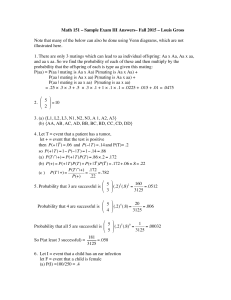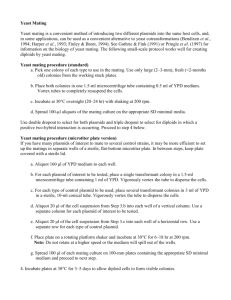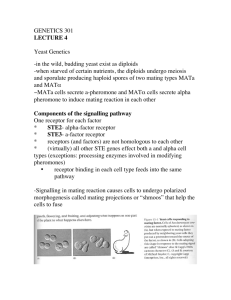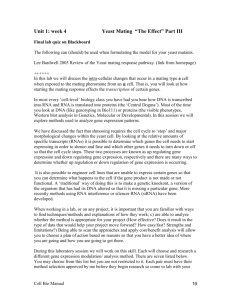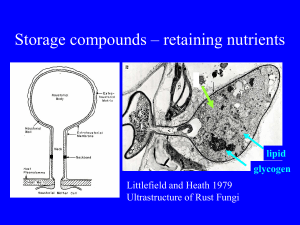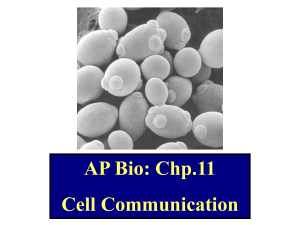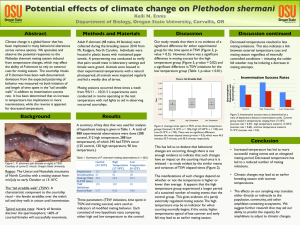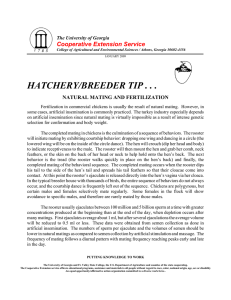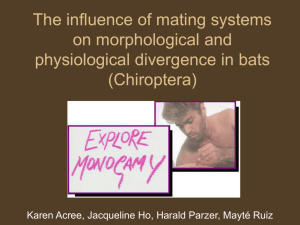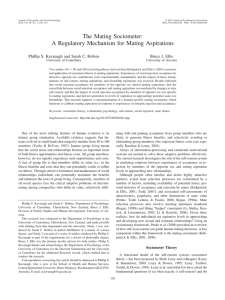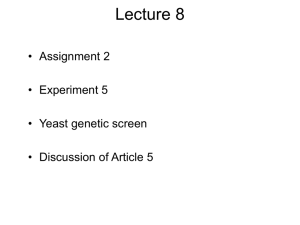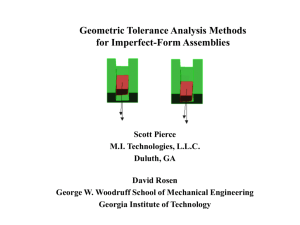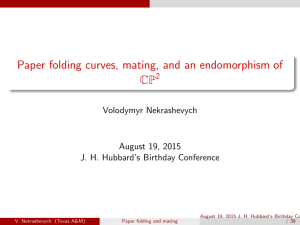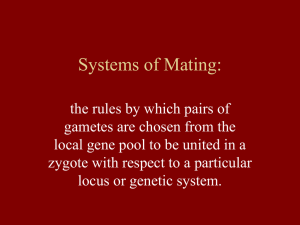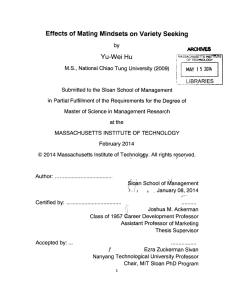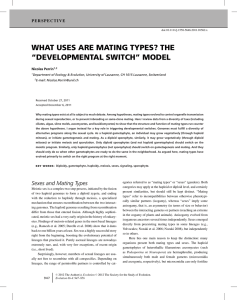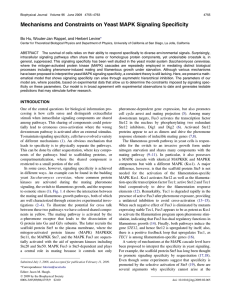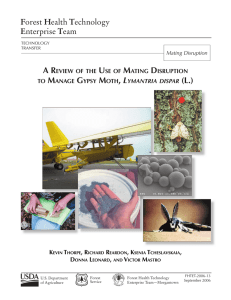Cell Communication Overview Notes
advertisement
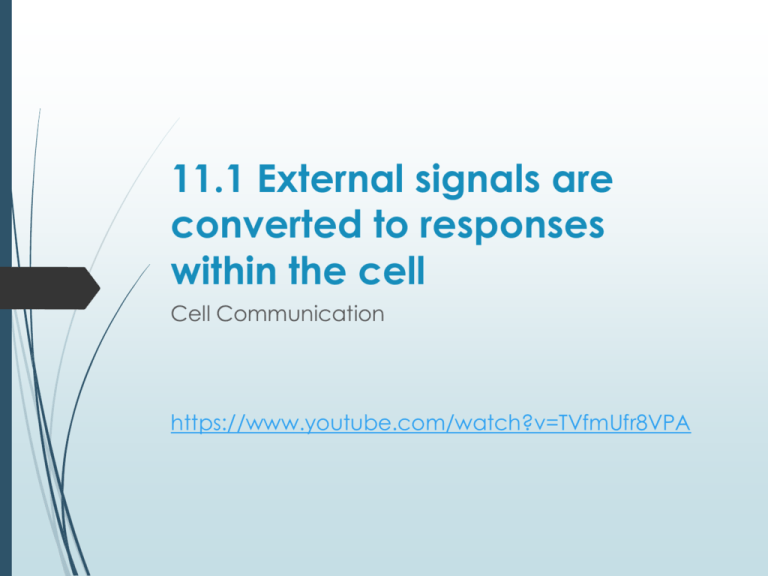
11.1 External signals are converted to responses within the cell Cell Communication https://www.youtube.com/watch?v=TVfmUfr8VPA Evolution of Cell Signaling: S. cerevisiae The yeast, S. cerevisiae, has two mating types, a and . Cells of different mating types locate each other via secreted factors specific to each type. Each type secretes a specific factor that binds to receptors only on the other type of cell. When exposed to each other’s mating factors, a pair of opposite cell types fuse (mate). Figure 11.2 factor Receptor Once received by 1 Exchange of mating factors the yeast cell surface a receptor, a mating Each cell signal is changed, or type secretes a mating transduced, into a factor that a factor form that brings Yeast cell, Yeast cell, binds to mating type receptors on mating type a about the cellular the other cell response of mating. type. 2 Mating A signal transduction Binding of the factors to pathway is a series of a receptors steps by which a induces changes in signal on a cell’s cells that surface is converted leads to their fusion. into a specific 3 New a/ cell cellular response. a/ Local and LongDistance Signaling Cells in a multicellular organism communicate by chemical messengers. Animal and plant cells have cell junctions that directly connect the cytoplasm of adjacent cells. In local signaling, animal cells may communicate by direct contact, or cell-cell recognition. In many other cases, animal cells communicate using local regulators, messenger molecules that travel only short distances. Long-distance signaling Endocrine cell Blood vessel Hormone travels in bloodstream. Target cell specifically binds hormone. (c) Endocrine (hormonal) signaling In long-distance signaling, plants and animals use chemicals called hormones. The ability of a cell to respond to a signal depends on whether or not it has a receptor specific to that signal. The Three Stages of Cell Signaling: A Preview Earl W. Sutherland discovered how the hormone epinephrine acts on cells. Sutherland suggested that cells receiving signals went through three processes: reception, transduction, and response.

